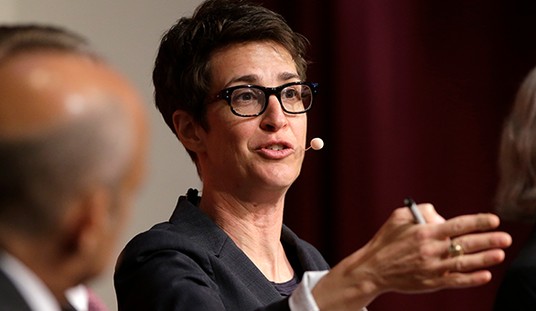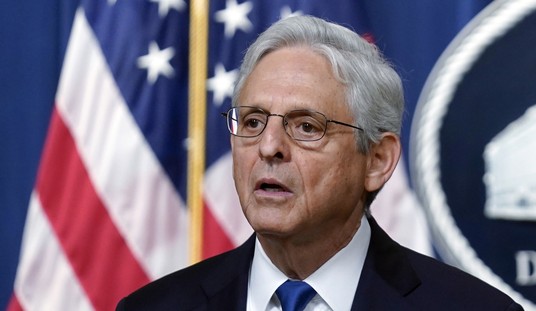Howell’s long national nightmare is over, AP reports. “For the first time in its 80-year history, Augusta National Golf Club has female members:”
The home of the Masters, under increasing criticism the last decade because of its all-male membership, invited former Secretary of State Condoleezza Rice and South Carolina financier Darla Moore to become the first women in green jackets when the club opens for a new season in October.
Both women accepted.
“This is a joyous occasion,” Augusta National chairman Billy Payne said Monday.
And presumably, it’s a joyous occasion for former Times editor Howell Raines, as he was absolutely obsessed with making Augusta co-ed, beginning in the fall of 2001 — to point where, with nearly 100 stories run on the issue between with 2001 and mid-2003, Augusta seemed to overshadow another, arguably (though not to Raines) even bigger story of the period, as Mark Steyn wrote back then:
If you’re a devoted New York Times reader, you may recall that, at the end of last year, the paper developed a weird Page One obsession with Augusta National and its attitude to women. The Times had no position on war with Iraq but by golly it knew where it stood on the burning question of Augusta’s sexism and it hammered it home by every means at its disposal, calling on both CBS and Tiger Woods to pull out of the Masters and then reporting both parties’ total indifference to the Times’ blustering as a sign of the growing “controversy”. Rarely has the paper’s mighty firepower been so concentrated on a single target. Even when events temporarily diverted their attention to less important issues like war, they managed to find a golf angle:
“Citing Role of Women in War, Burk Raises Pressure on Augusta
By Richard Sandomir
“Martha Burk intensified her campaign to force Augusta National Golf Club to admit women as members yesterday by invoking the war in Iraq, saying that women can serve in the armed forces and die in combat but cannot join the home of the Masters…”
Make club, not war! That’s the spirit. The Masters drew nearer and The Sunday Telegraph in London asked me if I’d like to write a piece on the raging furor at Augusta. I politely declined, saying there is no furor, it’s just Martha Burk, of the National Council for Women’s Organisations; Rent-a-Rev Jesse Jackson, President-for-Life of the People’s Republic of Himself; Howell Raines, executive supremo of the Times; and maybe a couple of dozen others. It’s a big nothing, I advised the Telegraph. As usual, they paid me no heed and ran a piece claiming that “Far from going away, the row has got louder.”
Well, this weekend we finally got to see how loud it was. According to this newspaper, Ms Burk’s big protest attracted two dozen supporters, outnumbered five to one by the press. According to USA Today, she had 40 supporters, outnumbered more than two to one by the cops.
Let’s be generous and call it 40. Four-zero? That’s it? In the last nine months, The New York Times has run 95 stories on Martha Burk and Augusta. So, aside from being outnumbered by police and reporters, Ms Burk’s 40 supporters were outnumbered more than two to one by New York Times stories on Ms Burk. Every time the Times mentioned this allegedly raging furor, it attracted approximately another 0.4 of a supporter to her cause. If The National Post’s figures are correct, Ms Burk’s supporters in the campaign against Augusta National came perilously close to being outnumbered by the holes.
The New York Times may now cease publication, as its central mission at the start of the 21st century has now been concluded. However, if it chooses to soldier on, Mark Thompson, the Times’ new CEO, formerly director general of the BBC will feel right at home in his new corporate digs on the other side of the Atlantic. “Culture and organization are two things that the BBC and New York Times share,” media analyst Ken Doctor tells the Wall Street Journal.
He’s certainly right about the shared culture:
http://www.youtube.com/watch?v=OY4umBmJHjg










Join the conversation as a VIP Member